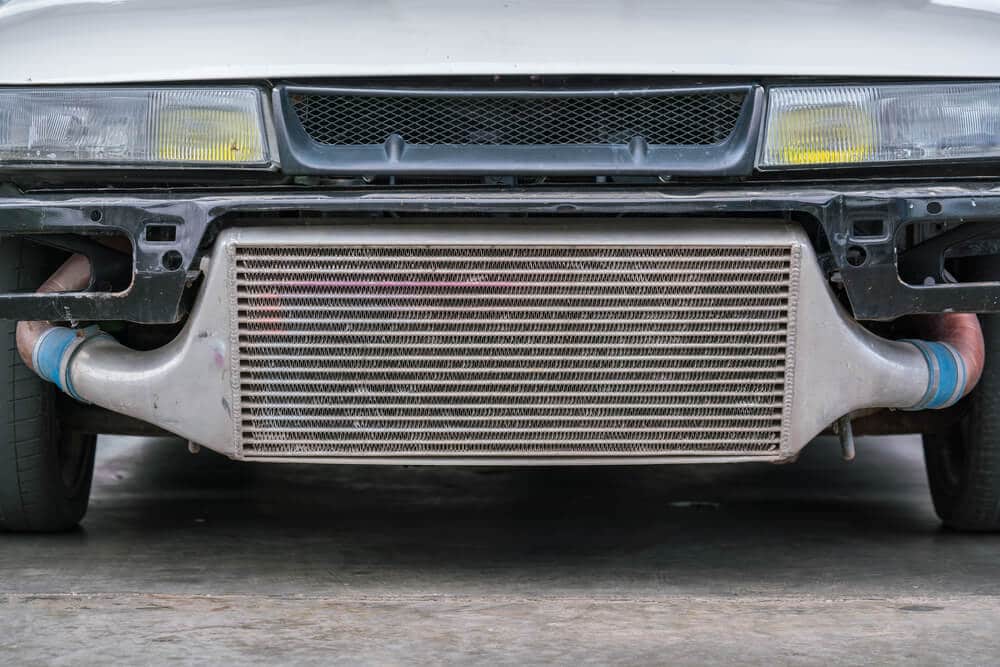Most states require your car to have bumpers (often both front and rear), but others will allow you to drive a car if it was specifically designed without bumpers.
Additionally, some states don’t have laws specifically relating to bumpers.
Keep in mind that even if your state does not technically require bumpers, police can still issue a citation if they deem your vehicle to be unsafe for the roads.
Below, we provide the state-by-state breakdown of bumper laws.
Is It Illegal to Drive Without a Bumper?
In many states, it’s illegal to drive a car without front and rear bumpers. These regulatory laws are in place because bumpers are an important car safety feature, and driving a car without them can be very dangerous in the event of a wreck.
We reviewed state statutes, administrative codes, and car inspection requirements in each state and found that each state falls into one of three categories:
- States that require all cars to have bumpers
- States where you must keep or replace bumpers if they were originally on the car, as designed by the manufacturer
- Note: In these states, if the car was not originally designed with bumpers, you can drive it without them.
- States with no specific bumper requirements
Note that many states forbid driving a car in an “unsafe condition” or with broken pieces protruding.
If your bumper is missing, damaged, or unsafely attached, it’s possible the police in your area could consider your car unsafe and issue a ticket, even if your state’s legal code does not explicitly mention missing or damaged bumpers.
The fact that your state has no specific requirements for bumpers would not guarantee your success if fighting the ticket in court.
All states also require you to display license plates on the front and/or back of your car. Without a bumper, you will still need to attach the plates in another visible spot.
Bumper Requirements by State
The table below details which states have laws regarding bumpers.
We researched vehicle codes by state, and we’ve included links to each state’s most relevant legislation or safety inspection manual for further information.
Some states make exceptions for particular types of vehicles, such as trucks over a certain weight.
If you drive something other than a standard passenger vehicle or SUV or you still aren’t sure if your car is street-legal, you may want to contact a local attorney or your state’s department of motor vehicles.
| State | Bumper Requirements |
|---|---|
| Alabama | None |
| Alaska | Prohibits driving with bumpers or other equipment removed |
| Arizona | None |
| Arkansas | None |
| California | Must have front and rear bumpers unless the vehicle didn't originally have them |
| Colorado | None |
| Connecticut | None |
| Delaware | None |
| Florida | Must have front and rear bumpers |
| Georgia | None |
| Hawaii | Must have front and rear bumpers |
| Idaho | Must have front and rear bumpers unless the manufacturer didn't originally include them |
| Illinois | Must have front and rear bumpers |
| Indiana | Must have front and rear bumpers if the manufacturer originally included them |
| Iowa | Must have front and rear bumpers |
| Kansas | None |
| Kentucky | None |
| Louisiana | Must have front and rear bumpers if the manufacturer originally included them |
| Maine | Must maintain manufacturer's design |
| Maryland | Must have front and rear bumpers with no extensions, modifications, broken parts, or sharp edges |
| Massachusetts | Must have front and rear bumpers |
| Michigan | Must have front or rear bumpers or another energy absorption system in good condition |
| Minnesota | Must have front and rear bumpers |
| Mississippi | None |
| Missouri | Must have front and rear bumpers |
| Montana | Most vehicles must have front and rear bumpers; there are exceptions for cycles, tractors, and rear bumpers on vehicles with attached work equipment |
| Nebraska | None |
| Nevada | None |
| New Hampshire | Must have front and rear bumpers as the manufacturer intended |
| New Jersey | Must match the manufacturer's specifications |
| New Mexico | None |
| New York | Must have front and rear bumpers |
| North Carolina | None |
| North Dakota | Must have front and rear bumpers |
| Ohio | None, but if modified, bumpers should be of appropriate height and in safe condition |
| Oklahoma | None |
| Oregon | None |
| Pennsylvania | Must have front and rear bumpers that are either original equipment or suitable replacements |
| Rhode Island | Must have front and rear bumpers |
| South Carolina | Must have front and rear bumpers as designed by the manufacturer |
| South Dakota | None |
| Tennessee | Must have bumpers or an equivalent energy absorption system |
| Texas | None |
| Utah | Must have front and rear bumpers if the vehicle was originally designed with them |
| Vermont | Must have front and rear bumpers of the type installed by the manufacturer |
| Virginia | None |
| Washington | Must have front and rear bumpers unless the vehicle's original configuration didn't include them |
| West Virginia | Must maintain the manufacturer's design |
| Wisconsin | Must have front and rear bumpers |
| Wyoming | None, but if the vehicle has bumpers they should be in safe, undamaged condition |
Penalties for Driving Without Bumpers
If your state requires your car to have bumpers and you’re caught driving without them, typical penalties include traffic citations and fines.
If you allow these types of infractions to accumulate, you may face the possibility of going to court and/or jail time.
Because of this, it is important to be aware of your state’s regulations, keep your car up to code, and pay for any tickets/citations in a timely manner.
More Information
For more on state policies for car parts, we explain whether or not it’s illegal to drive without airbags.
 William Lipovsky
William Lipovsky






